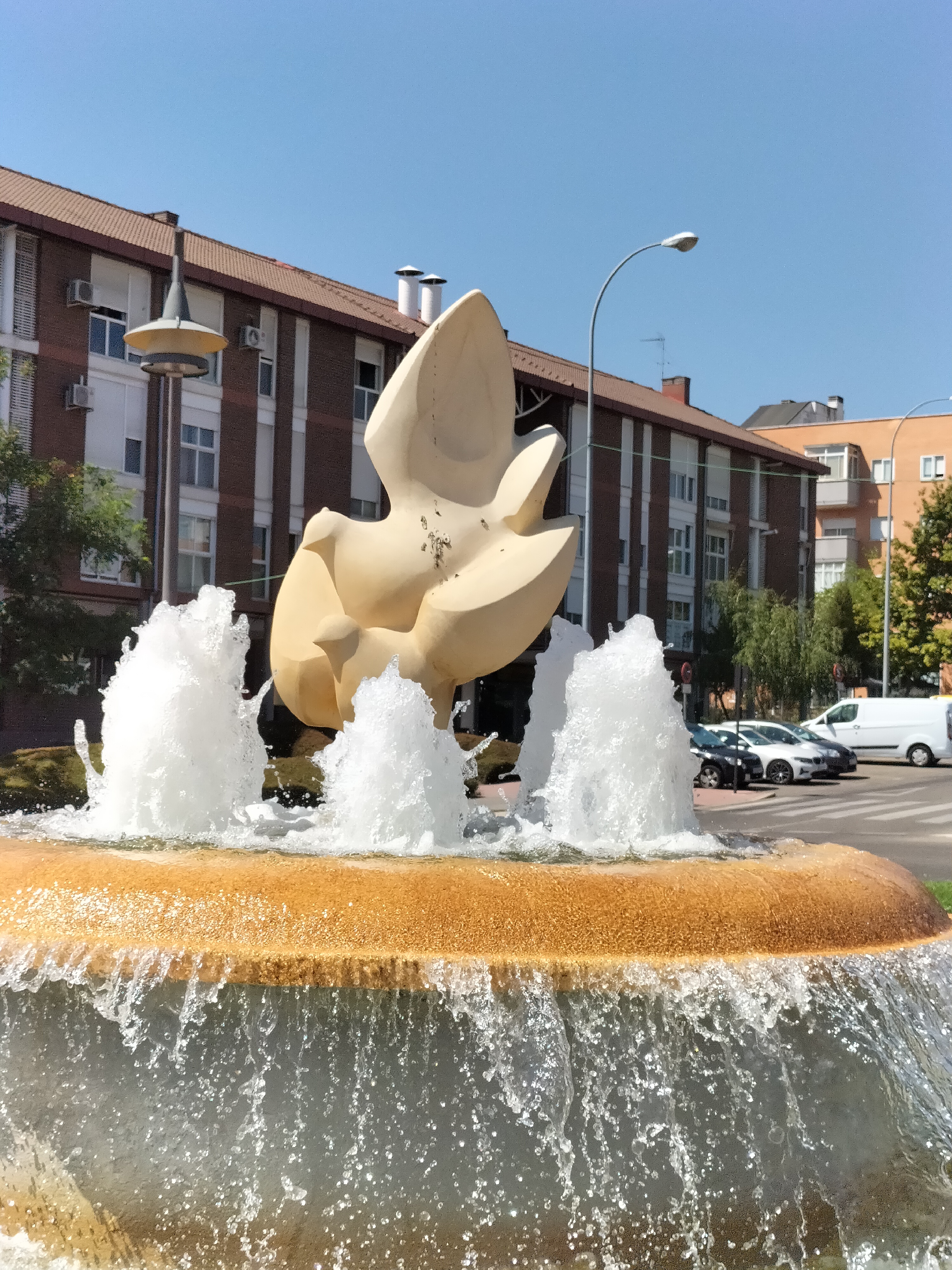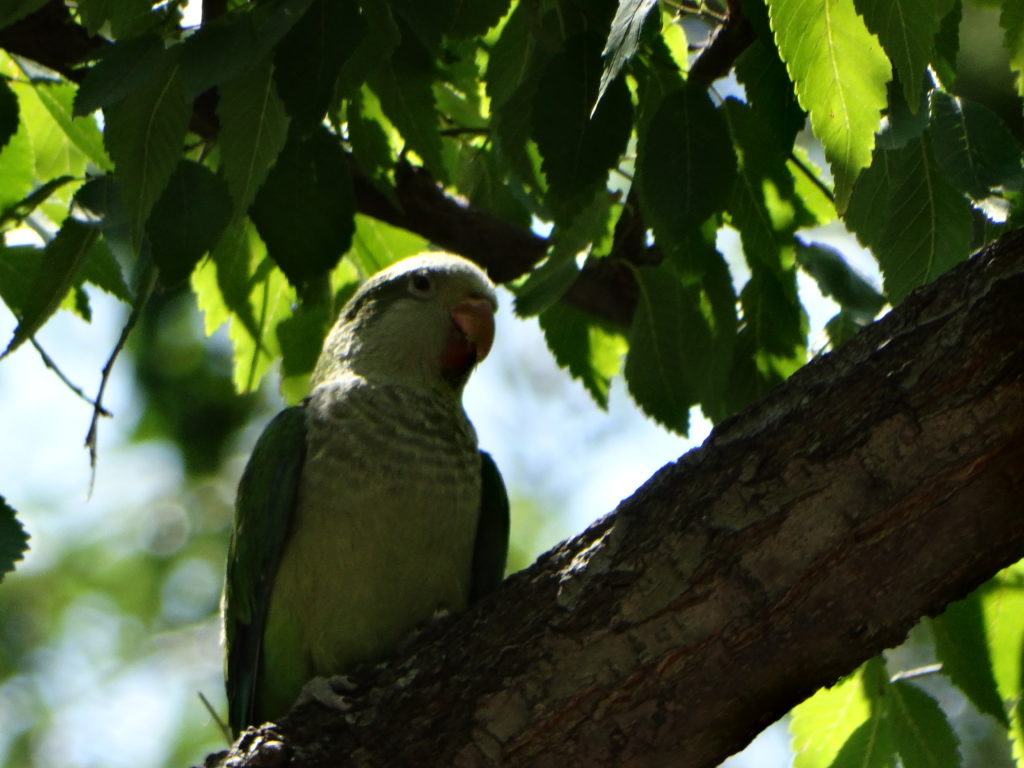Being bird lovers, my hubby and I can’t help but relish viewing all the new species we’re finding in Tres Cantos and other places in Spain. But learning their calls and physical characteristics of all the new birds is a daunting task. Some birds, however, are old friends.

For starters, there’s the ubiquitous House Sparrow. Being a birder from the US, I was used to looking at these birds a bit disdainfully. Invasives, was the word that would come to mind when I saw them. But really, it’s not their fault that we brought them to the US, either intentionally (take the story of Eugene Schieffelin who, in 1890, wanted to populate the New World with all the bird species mentioned by Shakespeare so he had crates of different bird species shipped over) or unintentionally, when, hundreds of years ago, we docked ships in ports for weeks at a time and the enterprising little birds built nests on the wooden mast poles. It’s not their fault that these “trees” moved slowly across the ocean and landed in fresh new habitats. They are survivors. Yes, they are able to more successfully compete for food and resources than the native North American birds, but again, our fault for taking them there.

Anyway, now that I’m living in Europe, I’m learning to look at House Sparrows differently since I’m on their territory. And the fact they were so common in the US meant that I already knew their call. So, I can quickly pick out their chattering voices from the leafy branches overhead as I walk past.
Starlings are also in that category of “don’t-think-of-them-as-invasives-any-more!” One slight twist: in the US we have the Eurasian Starling, and here in central Spain it’s the Spotless Starling. They are the same size and shape, and their dark, glossy feathers and chattery, raspy calls are, to my inexpert ear, practically the same, so they are another easy species to identify.
The third, formerly thought of as “invasive” but now seen in new light bird species is the Eurasian Collared Dove, cooing “One more, please! One more, please!” And, where in Austin these doves were pretty large compared to the native American species, here they seem positively tiny compared to the Common Wood Pigeon, a dove that seems to be at least twice as large the Eurasian Collared Doves or the pervasive Rock Pigeons.
Another “old friend” from Austin, which is also an introduced species here in Madrid, is the Monk Parakeet. It’s not its fault that we hunted this South American species and took it to the markets all over the world for the pet trade. And then several decades ago, some individuals either got loose or were freed and figured out how to make a decent living in another part of the globe, setting up noisy colonies of glossy blue-green birds. Yes, these gregarious feathered friends make large nests with lots of sticks, and yes, cellphone and electric towers are their favorite locations for these nests, as it’s easy to spy enemies coming from a distance when you’re up there, but again, not their fault for being resourceful survivors. I love these birds! Madrid is simply teeming with them! (For an interesting podcast on parrots who have figured out how to live all over the world, listen to the August 12th, 2021 episode of the American Birding Association podcast with Nate Swick—easily my all-time favorite podcast!)

Then there are some new bird species that are so similar to US birds, that they have not been difficult to learn. There’s the European Blackbird. It looks just like an American Robin, if that robin had been dipped in pure black ink, except for its bright orange beak and orange eye ring. (Females are more brown, to protect them in their nests.) This bird is a thrush, just like our robin, and it acts just like the robin too, hopping around in the grass and hunting up worms. The calls are different though, melodic and lovely, and I’m still learning them.
You also have the Eurasian Magpies, which look just like the Black-billed Magpies you can see in the Western US. Urracas, they are called in Spanish, and their very loud, chattering calls, which sound like a box of castanets being shaken, can be heard all over Tres Cantos as they majestically glide down from branches on wide, outstretched wings. Great birds!

I’ll end with the chickadees, which in Europe are all called tits, probably because of the tit-tit-tit sounds they make. (Chickadees and Titmice are also in the tit group in the US, but here none are called Chickadees.) So, in the group of mitos, as they are called in Spanish, you have the Great Tit, which looks like a Carolina or Black-Capped Chickadee but with an olive colored back, a yellowish chest, and a black line that extends from its black bib, down the length of its chest. You also have the Eurasian Blue Tit, which is a gorgeous chickadee with a blue black, a shorter blue cap on its head that lets a white line show above the black eye stripe, and a yellow chest with no line down the middle.

And, finally, you have the Long-tailed Tit, which is the strangest-looking one, to my eye, because of its white cap (in my head, all chickadees should have black caps) and its gorgeous, very long, tail. I’ve seen very few of these here in Madrid, but probably because they are shier, and I don’t know their calls well enough.

That’s the roundup of easy birds, but of course, there are many more different species around. I’ll be posting more blogs about Spanish birds, so stay tuned!
What do you think so far? Is there anything about our adventures in Spain or Tres Cantos you’d like me to discuss in a future blog post? Let me know!
And as always, if you like my writing, please check out my novels here.



4 comments
Skip to comment form
When I was in Cancun, I couldn’t find the bird making a racket in the trees, and I had never heard a bird like that before. Finally one day I heard it outside our door and peeked out the peephole and saw a huge magpie. Noisy noisy noisy! The maid working in the next room came out and shook her broom at him and he flew off. She told me it was a magpie and she hates their squawking sound they make. The world’s most annoying bird she said, to which I replied, you have never been awakened by a bunch of squawking crows at 5 am then! It’s all a matter of perspective I guess! I’m glad you are having fun!
Author
Thanks, Marilyn, that was a fun story!
I loved the blue & white one.
Author
Yes, the Eurasian Blue Tits are adorable. We saw several this morning!